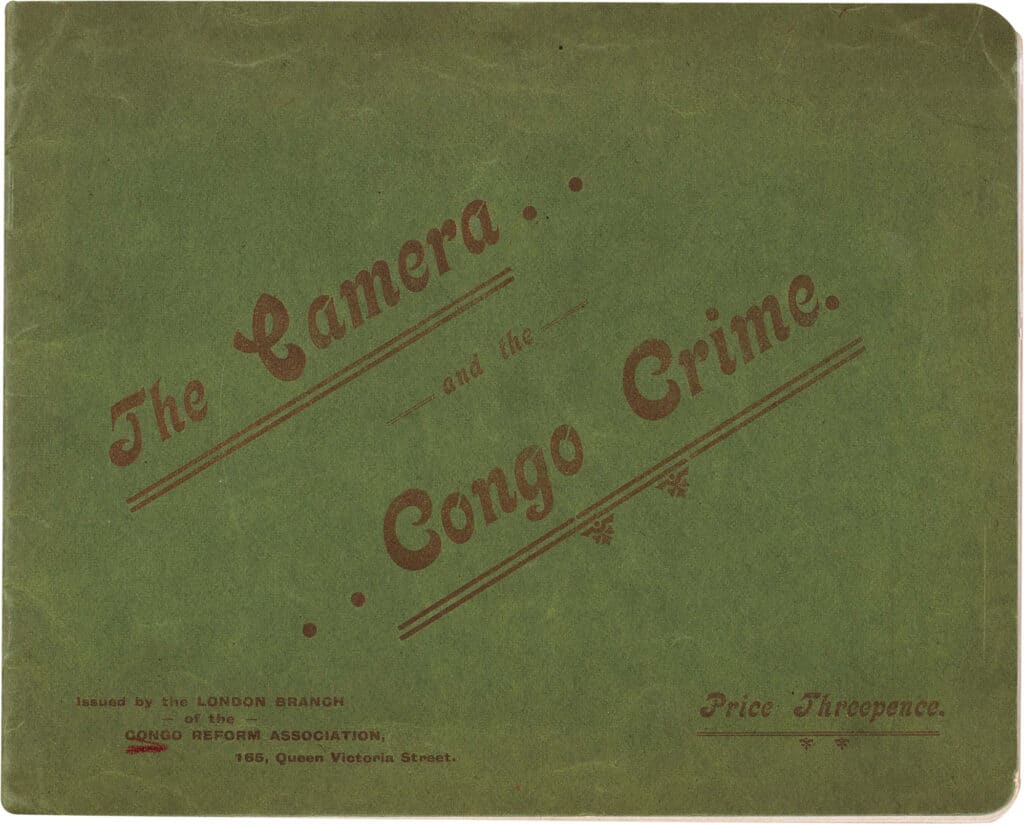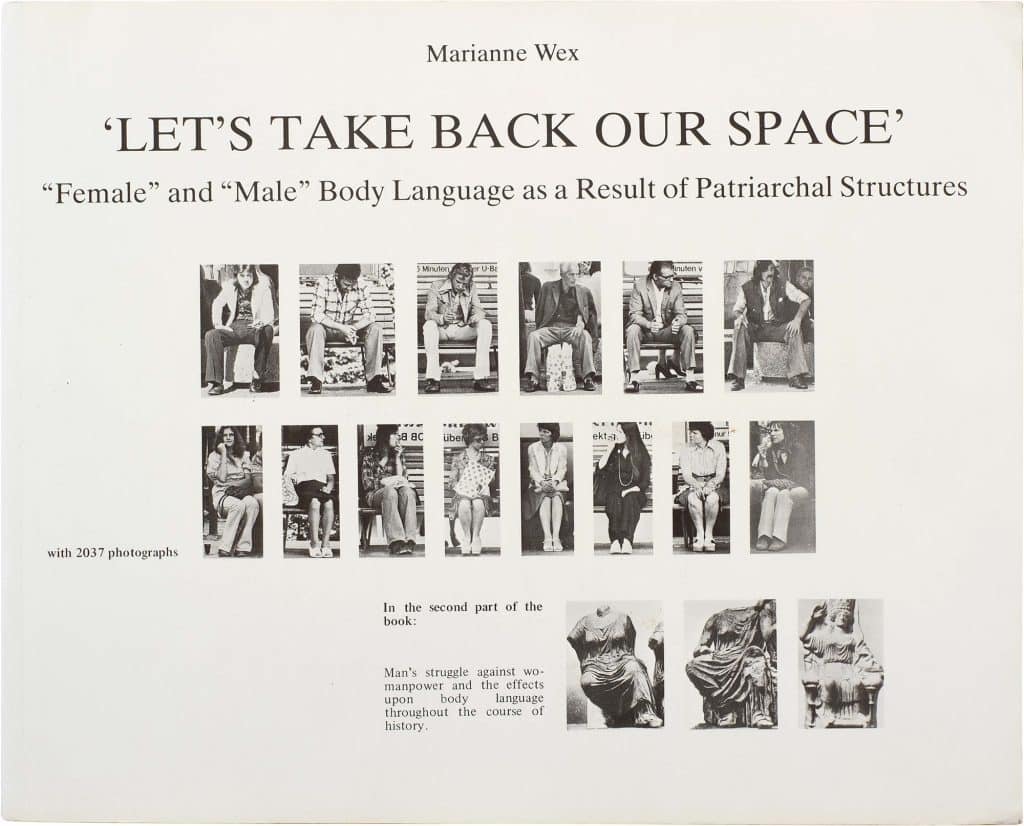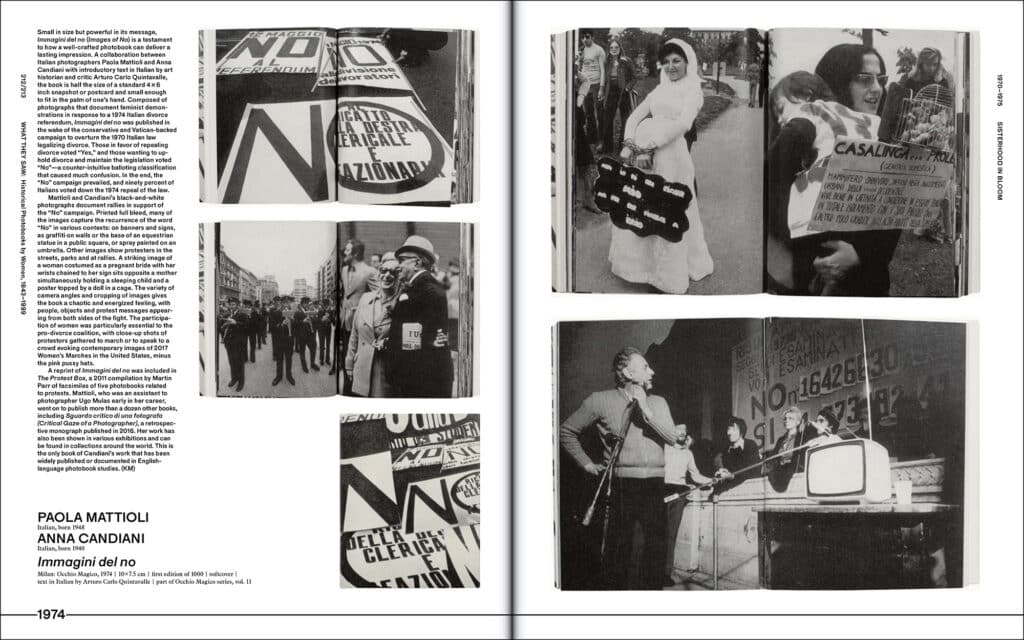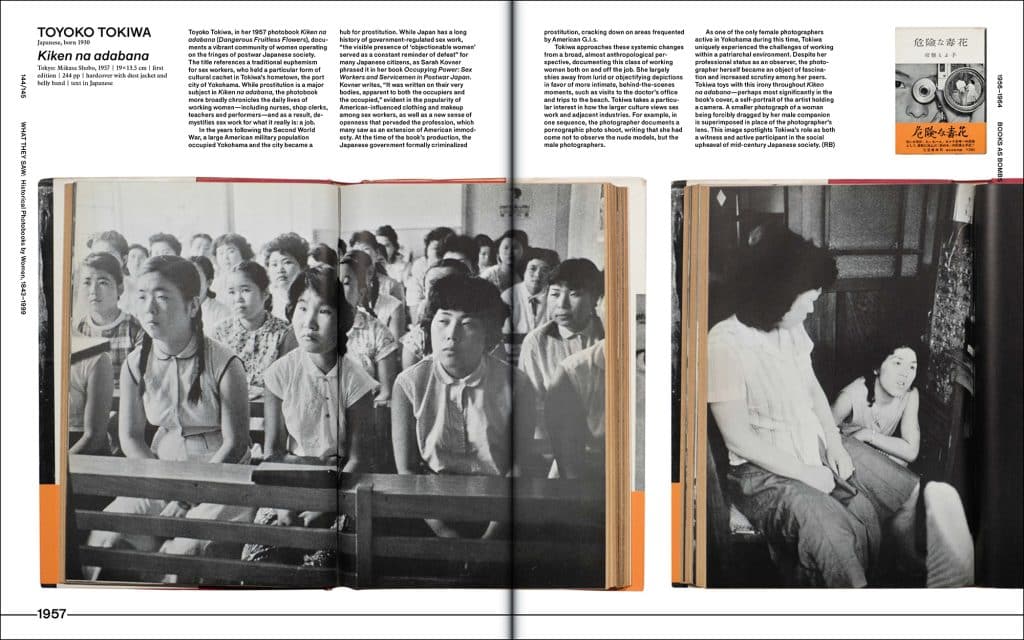In 2004, The Photobook History Volume 1 was published. Written by photographer Martin Parr and author Gerry Badger, it led to a flurry of interest in the photobook. Hoistories of Soviet, Latin American, Chinese, Dutch, Japanese, Dutch, and Spanish photobooks were published in the years after. With a few exceptions (Enghelab Street, Hannah Darabi’s book on revolutionary publications from Iran springs to mind) these books were written by men. Flick through the pages of any of these books and you will find only a handful of books by women. Photobook history is an overwhelmingly male history.
It’s a history that needs to be “unwritten,” says Russet Lederman, co-editor (with Olga Yatskevich) of What They Saw: Historical Photobooks by Women, 1843–1999.
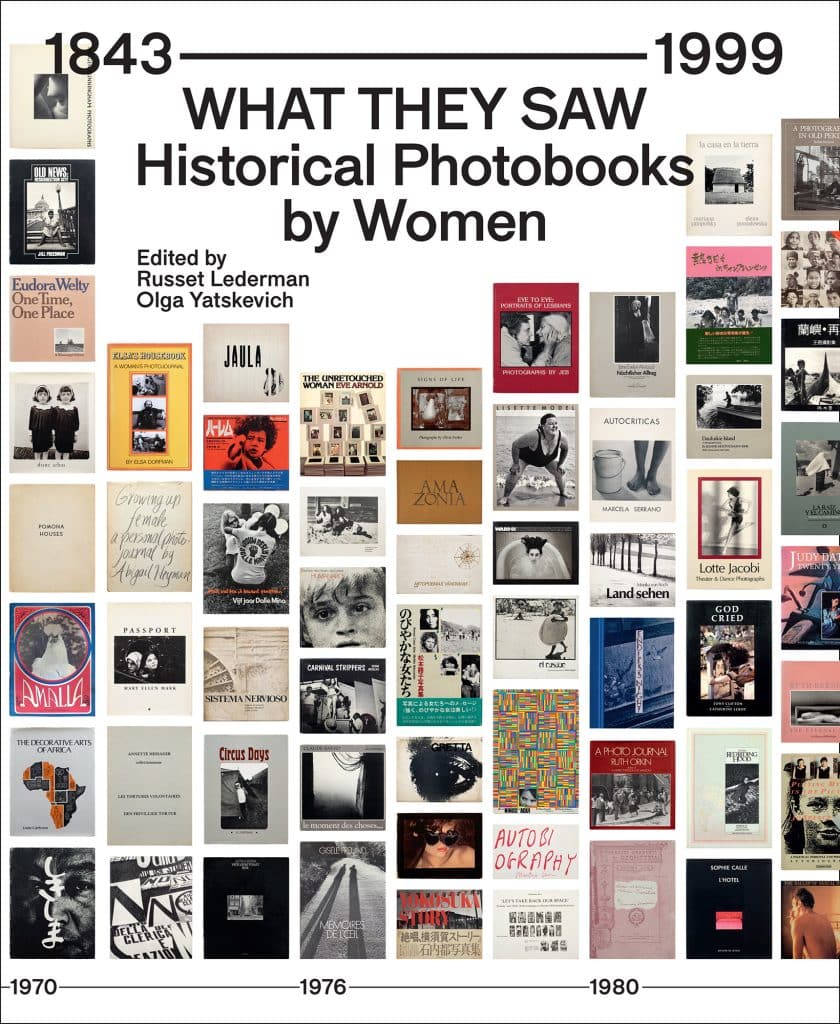
What they Saw, says Lederman in an online interview from her home in New York, is part of that process, a process that she hopes will lead to new discoveries, new histories, and new ways of thinking of what a photobook can be.
Divided into a chronology of themed chapters that include The New Woman (1920-1935), From Ashes to Family (1956-1964), and Sisterhood in Bloom (1976-1979), the books in What They Saw range from the more familiar (Diane Arbus, Nan Goldin, Anna Atkins, Sophie Calle) to the more obscure.
Many of these publications were made in smaller editions due to lack of funding and lack of access to (male-dominated) publishing houses. “Funding was an issue,” says Lederman. “To do a printed book in an edition of 100 or more costs money. We can start with Anna Atkins as an example. In 1843 she published Photographs of British Algae privately, and she circulated it among friends. When you read the first volume of the Photobook History, it mentions Anna Atkins, but it doesn’t declare it as a first book, because it wasn’t commercially circulated. It wasn’t done with a camera. These subtle definitions of a photobook as a bound book that circulated commercially impeded many women who didn’t have a) the financial resources or b) the social connections to make that sort of book.”
“So to open up that kind of definition we need to include albums because in the 19th-century women were keepers of family albums and scrapbooks.”
The more open definition proposed by Lederman extends to collections such as an album of suffragette postcards compiled by Cristina Broom and Isabelle Marion Seymour for the WSPU. “I love that album,” says Lederman. “ It was stored at the Museum of London. They take the photographs out and put them in protective mylar sheets so the whole album was disassembled. That had the original album, they had all of Broom’s postcards, and they had a map of how to reconstruct it. So Jilke Golbach, (Curator of Photographs at the Museum of London) put that back together for me and shot it for me. And then it went back into storage.”
A further loosening up of what a photobook can be is apparent in the inclusion of Alice Seeley Harris’ The Congo Crime. “This was was part of the first human rights campaign,” says Lederman. “She made photographs on the rubber trade in the Congo (which at the time was the private property of Belgium’s King Leopold II), her husband showed them on lantern slides in the UK, and then put together pamphlets with the Congo Reform Association.”
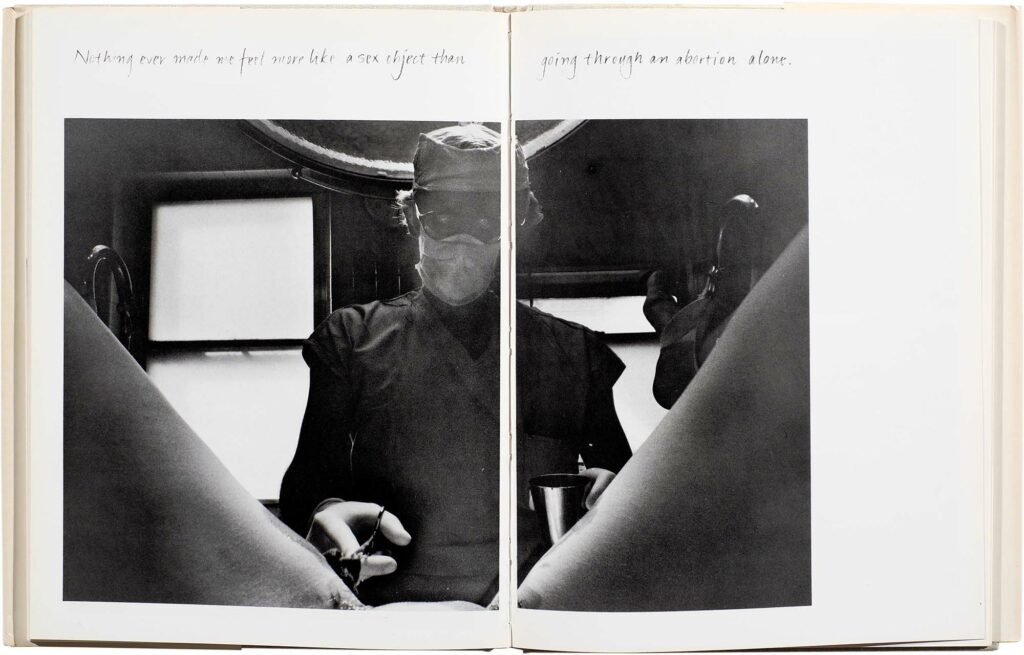
The images in the pamphlet use a range of (contested) visual strategies to show atrocities that included forced labor, amputation of hands, whipping, and murder on an industrial scale, images that helped prise Congo out of the hands of the Belgian king. Alice Seeley Harris is possibly the first activist photographer, and certainly one of the most successful.
Other activist books in What they Saw include Immagini del no (Images of No, 1974), a book of photographs by Paola Mattioli and Anna Candiani that protest the repeal of a law legalizing divorce, and Marianne Wex’s Let’s Take Back Our Space: ‘Female’ and ‘Male’ Body Language as a Result of Patriarchal Structures’, a book which adds a feminist slant to Goffman’s Gender Advertisements.
Elements such as authorship are also reconsidered. “Things are very overlapping,” says Lederman. “For example, in the 1970s, Toni Morrison worked on something called the Black Book. She contributed the visual montage and ephemera of black history that was in the center of the book. She didn’t write it, she didn’t edit it, she was an editor at the publishing house, Random House. She wasn’t the author.”
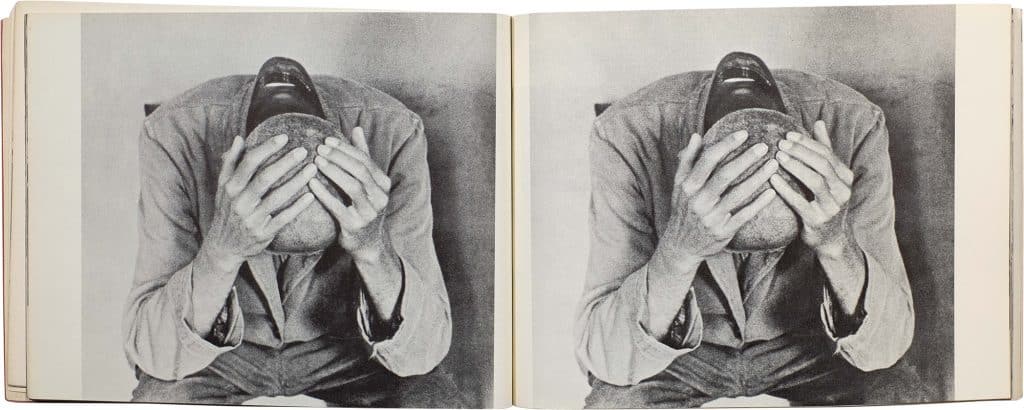
Going beyond the idea of the single author adds a collaborative element that runs throughout the book. There are books by photographers working with writers, designers, dancers, and doctors.
Carla Cerati collaborated with Gianni Berengo Gardin and Franco Basaglia (the figurehead of Italy’s anti-psychiatry movement) to make Morire di classe, a book that shows unflinching images of the Italian asylum and is again an example of photography serving a very serious political agenda – the ending of the asylum system in Italy.
In 1931, Laura Albin Guillot, a photographer who in her day job photographed stars of stage and screen and worked on high-end advertising campaigns, published Micrographie décorative, a beautiful wire-bound portfolio of images photographed through the microscope of her biologist husband.
The work of Guillot also indicates a loosening of generic boundaries with a hugely successful commercial and portrait photographer crossing over into a mode where science and art combine. This loosening of boundaries is something Lederman is eager to encourage.
With a loosening of boundaries come new ways of looking at a subject. This is apparent in Toyoko Tokiwa’s Kiken na adabana (Dangerous Fruitless Flowers), a book made about sex workers in Yokohama in the 1960s.
The difference between her images and those of the many Japanese male photographers photographing sex work at the time is apparent both in the cover (which features a woman being dragged away by a man reflected in the lens of Tokiwa’s camera) as well as the contents. ‘For example, in one sequence, the photographer documents a pornographic photo shoot, writing that she had come not to observe the nude models, but the male photographers,’ reads the text in the book.
The change in perspective is especially apparent in books that detail the everyday lives of women; Elsa Dorfmann’s Housbook: A Woman’s Photojournal, Jo Spence’s Putting Myself in the Picture, and Abigail Heyman’s Growing up female: a Personal Photojournal all provide insight into the specific viewpoint of the artist, with Heyman including an image of herself having an abortion just after it had been legalized in the USA. stating, “Nothing ever made me feel more like a sex object than going through an abortion alone,’ reads the caption.
The books in What they Saw cut across all genres and all subject matters with travelogues, propaganda, and photojournalism included. It begs the question (which is at the heart of this collection) of why so many of these publications have not been referenced more in the history of photography.
“Maybe people forget about them because they weren’t mentioned in earlier anthologies or the artist wasn’t mentioned in Beaumont-Newhall (the godfather of North American photography history) so they’ve almost been written out of photographic histories,” says Lederman.
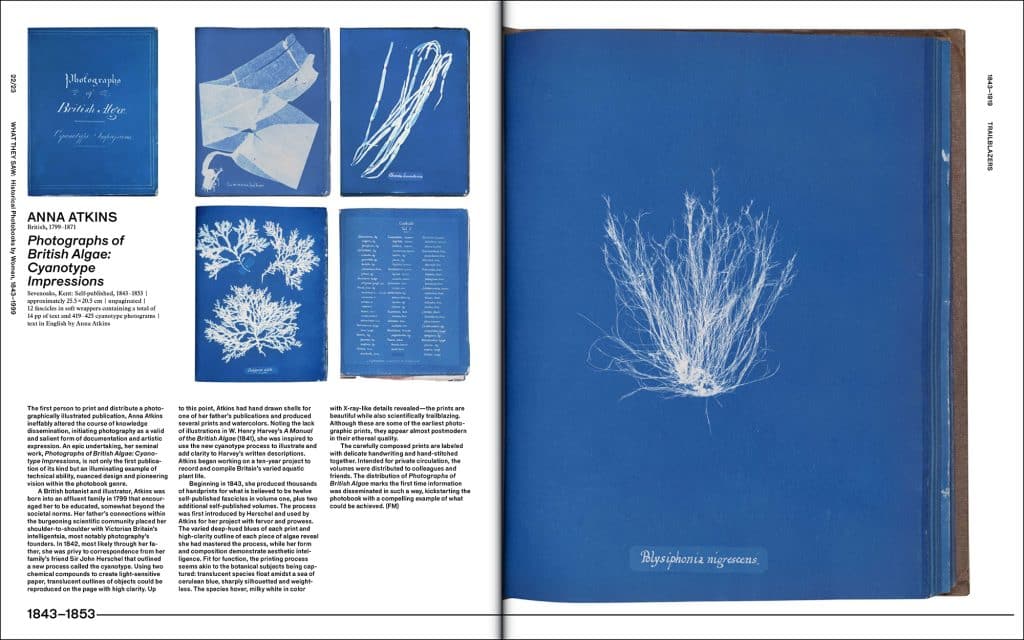
“Many of the first anthologies came about from collectors and those anthologies focused on what those collectors were interested in. They were white guys in their 60s who were interested in things like Christer Stromholm or Doisneau or Robert Frank and rightfully they should be. But since they were reading Beaumont Newhall, Martin Parr, and Manfred Heitling, some books were outside their scope. it wasn’t intentional but it happened. We need to expand to other groups writing the history and then we’ll be quite broad and we won’t need to section off anymore. We’re headed that way I think.”
That being said, the road to a diversity of representation does not always go as expected. “The big surprises were in the 1970s,” says Lederman. “We expected there would be greater diversity and women’s access at that point, and certainly women did gain access at that point but it was white middle-class women gaining access. Certainly, someone like Clarissa Sligh who was an African American woman got a grant at the Women’s Studio Workshop to produce her book What’s happening with Momma (a beautifully crafted Leporello artist’s book) but she was the exception.
“For the most part, a black woman or a woman of color or from another part of the world did not gain access. Many of the Japanese women who made books at that time traveled to Europe or the US to make books. So they’re coming from a certain class background to be able to do that.”
As well as widening ideas of what a photograph can be, Lederman is also interested in how the reach of the photobook can be extended beyond the niches it inhabits today.
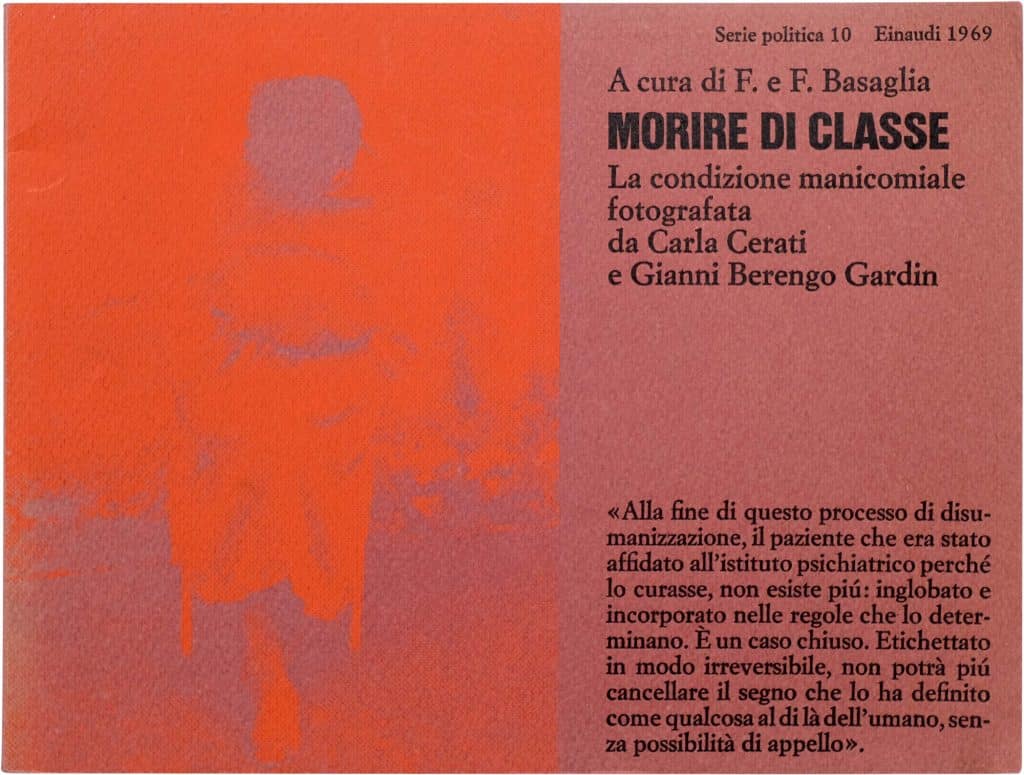
“How do we broaden that community, how do we extend it to people who know what a photography coffee table book is but don’t know what a photobook is. How do we make them feel empowered to have opinions about it. There is a whole larger audience out there, who I feel could be interested in photobooks as all of us here in this small little community enjoy them. But I don’t think that our small niche community is reaching them.”
Getting beyond a ‘niche community’ is something that Lederman and Yatskevich (the editors of What they Saw) are trying to do. The history of photography has been limited by arbitrary classifications of what is photographically correct, and many of these classifications shut out half of the world’s population. It’s time for that to end say Lederman and Yatskevich.
What They Saw: Historical Photobooks by Women, 1843–1999 is edited by 10X10 Photobooks and available for $85.

